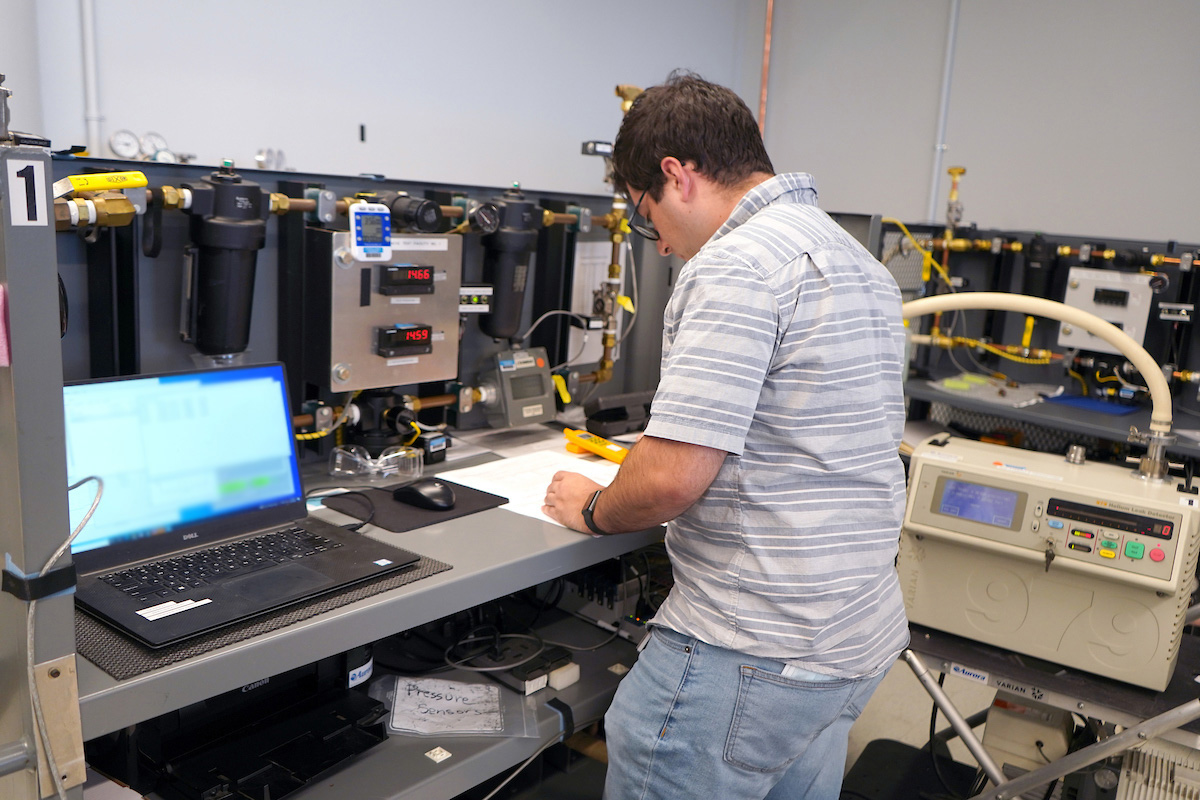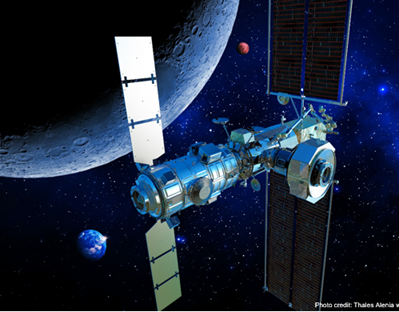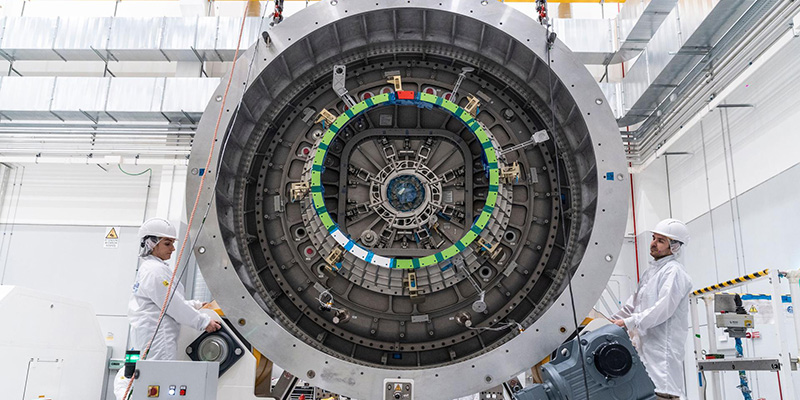The PPRV and MPEV valves sense and release pressure build up inside the module, enabling astronauts to safely live and work while orbiting the Moon. (Credit: NASA)
Under a subaward from Thales Alenia Space Italia, Aurora Flight Sciences, a Boeing Company, designed, built, and delivered next-generation Positive Pressure Relief Valves (PPRV) and Manual Pressure Equalization Valves (MPEV) for use on NASA’s Habitation and Logistics Outpost (HALO) module. HALO is one of two foundational habitation modules for NASA’s Gateway space station around the Moon.
Pressure relief valves are essential components for any spacecraft, as they help maintain predetermined pressure levels necessary for survival in the extreme conditions of outer space. The PPRV features a two-stage design with a trigger mechanism that automatically senses and releases pressure buildup inside the module. When the internal pressure reaches a preset level, the valve opens to allow air to escape, preventing further pressure increases. Once the pressure is relieved, the valve closes and is ready to detect any additional pressure changes.
The MPEV provides crew members with the option to manually equalize pressure between two modules or spacecraft using override knobs on both the inlet and outlet sides of the valve, allowing for greater control in managing the internal environment of the station modules. The MPEV is typically used to equalize the pressure between two spacecraft when they dock for the first time.
“Both the PPRV and MPEV are essential to the safety of the crew,” said Scott McNee, Aurora engineer and project manager. “Pressure changes above or below the predetermined levels could result in significant damage to the spacecraft and risk the lives of the crew. These two valves provide an added layer of safety when it comes to regulating the pressure within each module.”

Aurora engineers designed, built, and tested the valves at the company’s Aerospace and Autonomy Lab in Boston, Massachusetts.
These latest valves are based on the valve design currently used on the Cygnus cargo spacecraft, which delivers supplies to astronauts aboard the International Space Station (ISS). While derived from existing designs, today’s valves must meet more stringent lunar mission environmental requirements. Both the PPRV and MPEV are fully pneumatic mechanical valves, designed to operate without the need for flight software or electrical power, making them more resilient to the high levels of radiation in lunar orbit.
HALO is an integral part of NASA’s Gateway, which will enable long-term human exploration at the Moon by providing astronauts with a place to live, work, conduct research, and prepare for lunar surface missions. The Gateway is a key element of NASA’s Artemis missions to return to the Moon for scientific discovery and chart a path for the first human missions to Mars and beyond.

Artist’s rendering of NASA’s lunar gateway. (Credit: Thales Alenia Space)
“This delivery is the culmination of years of hard work and collaboration across many divisions, and it is a remarkable achievement for everyone involved,” said Scott. “We look forward to expanding our portfolio of spaceflight hardware and continuing to support our partners in advancing the future of spaceflight.”
ABOUT AURORA FLIGHT SCIENCES
Aurora Flight Sciences, a Boeing Company, advances the future of flight by developing and applying innovations across aircraft configurations, autonomous systems, propulsion technologies, and manufacturing processes. With a passionate and agile team, Aurora delivers solutions to its customers’ toughest challenges while meeting high standards of safety and quality. Learn more at www.aurora.aero.


